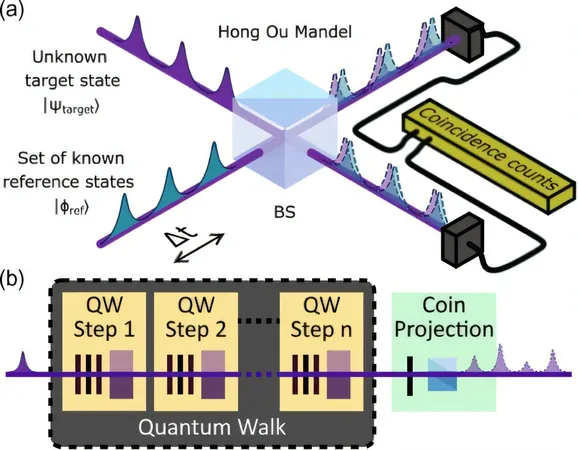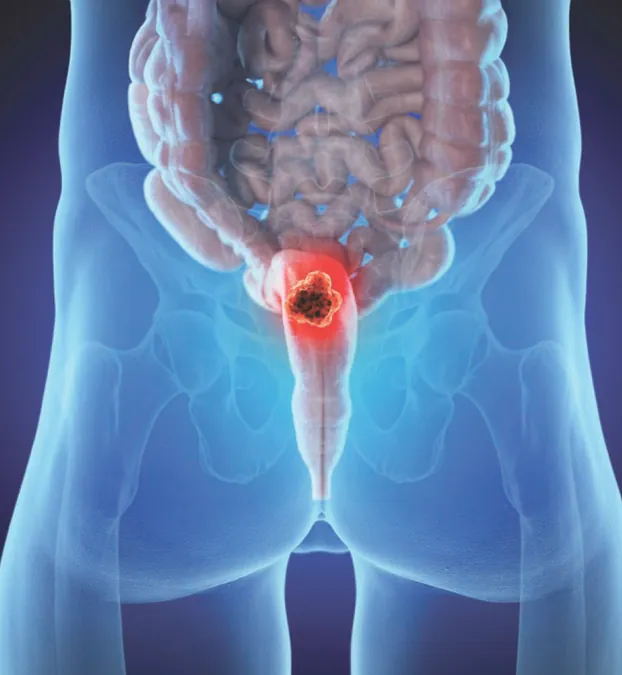
Unlocking the Quantum Future: A Simple Twist on High-Dimensional Information Processing with Photons
2025-05-09
Author: Rajesh
A Revolutionary Leap in Quantum Technology
In an exciting breakthrough, a team of researchers has unveiled a groundbreaking technique that simplifies the process of high-dimensional quantum information encoded in light, bringing us one step closer to the future of secure data transmission and advanced quantum technologies.
The Photon Revolution
Traditionally, storing quantum information relied on the precise timing of single photons—minuscule particles of light. However, current methods often demand complex and unstable measurement techniques that render practical applications cumbersome.
Innovative Solutions from Griffith University
Led by Dr. Simon White and Dr. Emanuele Polino from Griffith University's Quantum Optics and Information Laboratory (QOIL), the research presents a more stable method utilizing a quantum phenomenon called Hong-Ou-Mandel (HOM) interference. "Imagine it as the universe's awkward handshake that manages to achieve something significant," Dr. White describes.
Harnessing Photon Timing for Better Communication
The team successfully adapted HOM interference to time-bin quantum encoding, allowing for efficient storage of information based on the timing of photon arrivals. As Dr. White points out, "Photons are perfect carriers of quantum information, and using their arrival times facilitates a seamless quantum messaging process. We simplify the complexity by focusing on the interference, rather than the exact timing."
Expanding Horizons with Quantum Walks and Qudits
By merging HOM interference with a technique known as a quantum walk—which tracks the journey of photons over various paths—the researchers can generate high-dimensional quantum signals referred to as qudits. Unlike conventional bits that are limited to 0 and 1, qudits can occupy multiple states, vastly increasing the data capacity and enhancing the reliability of secure communications.
A Milestone in Quantum Fidelity
In their optical experiments, the Griffith team achieved an outstanding fidelity over 99%, demonstrating both the reliability of state generation and measurement techniques that exceed conventional limits. Dr. Polino emphasized the significance of quantum entanglement, stating, "This phenomenon is foundational for quantum mechanics, providing crucial insights into how quantum properties can be harnessed for future innovations."
Towards a More Secure Quantum Future
As quantum technology evolves, the challenges of transmitting secure signals remain formidable. However, encoding information using time-based qudits positions us to tackle these challenges with greater ease and resilience. Dr. White concludes, "Our advancements boost the stability and versatility of time-bin quantum encoding, edging us closer to scalable quantum solutions. This work not only deepens our understanding of quantum particles but also unlocks new avenues for secure communications, advanced quantum simulations, and real-world applications—an endeavor we consider incredibly vital."

 Brasil (PT)
Brasil (PT)
 Canada (EN)
Canada (EN)
 Chile (ES)
Chile (ES)
 Česko (CS)
Česko (CS)
 대한민국 (KO)
대한민국 (KO)
 España (ES)
España (ES)
 France (FR)
France (FR)
 Hong Kong (EN)
Hong Kong (EN)
 Italia (IT)
Italia (IT)
 日本 (JA)
日本 (JA)
 Magyarország (HU)
Magyarország (HU)
 Norge (NO)
Norge (NO)
 Polska (PL)
Polska (PL)
 Schweiz (DE)
Schweiz (DE)
 Singapore (EN)
Singapore (EN)
 Sverige (SV)
Sverige (SV)
 Suomi (FI)
Suomi (FI)
 Türkiye (TR)
Türkiye (TR)
 الإمارات العربية المتحدة (AR)
الإمارات العربية المتحدة (AR)